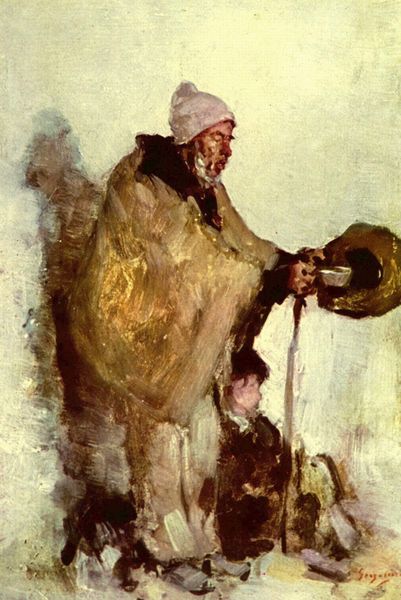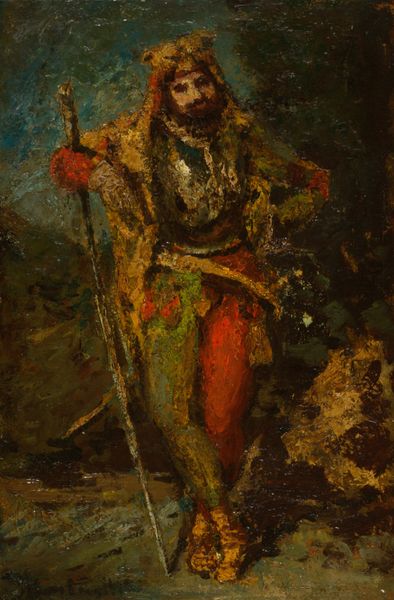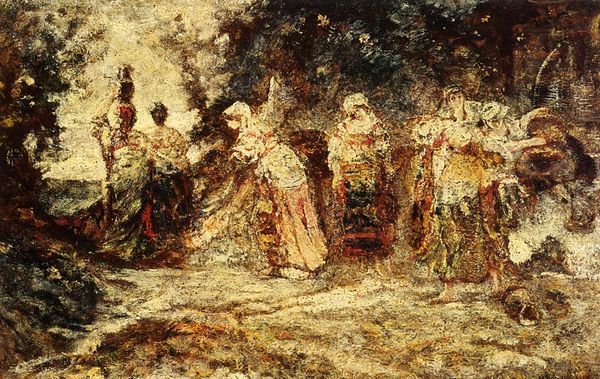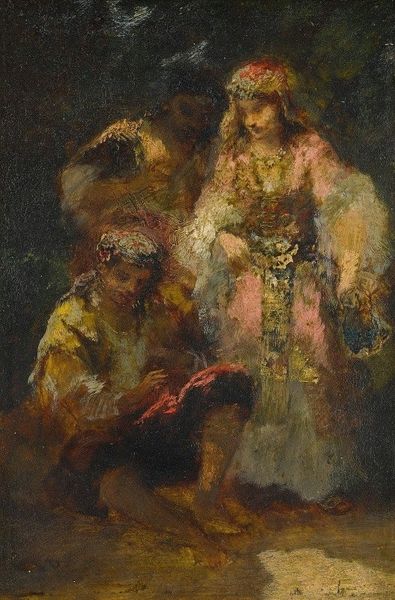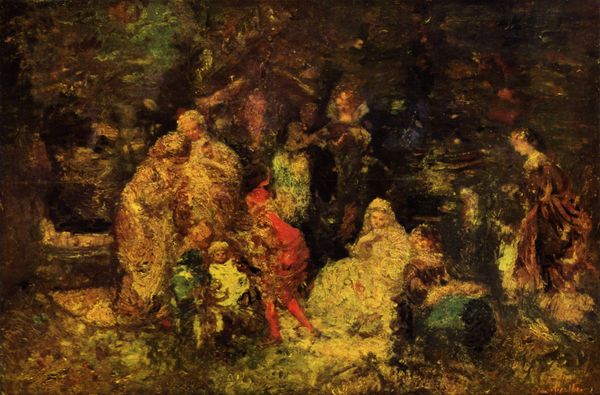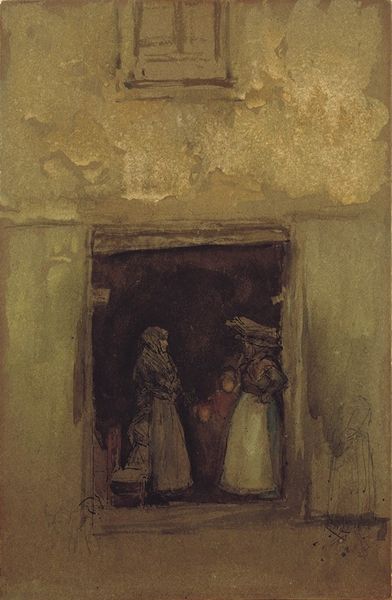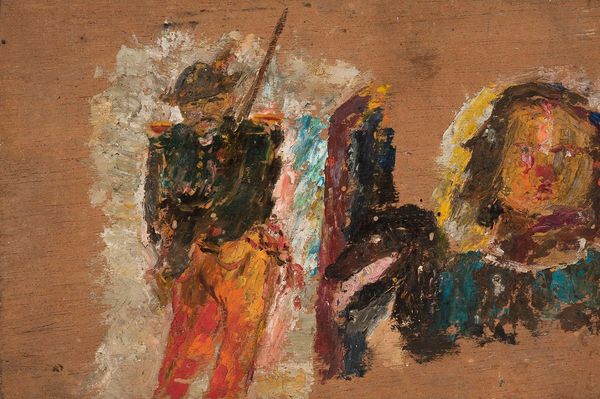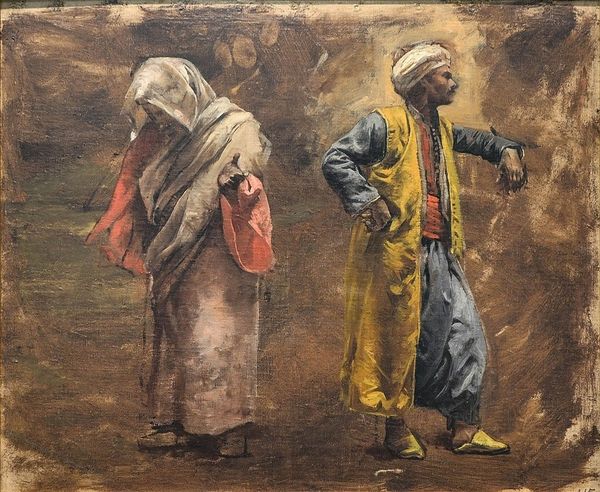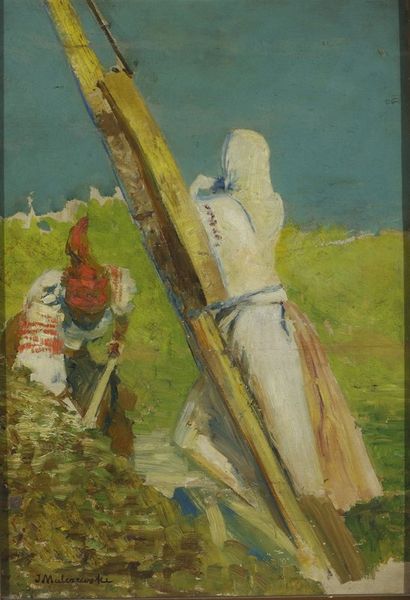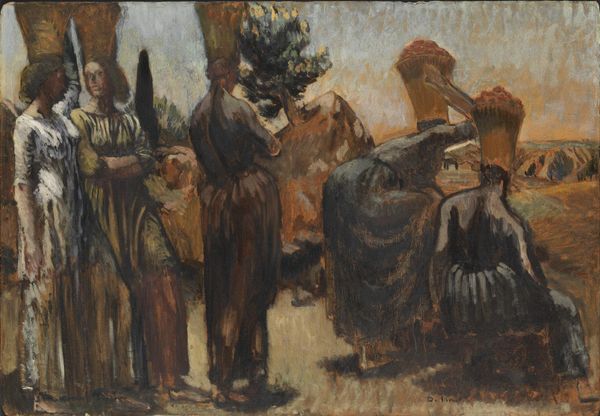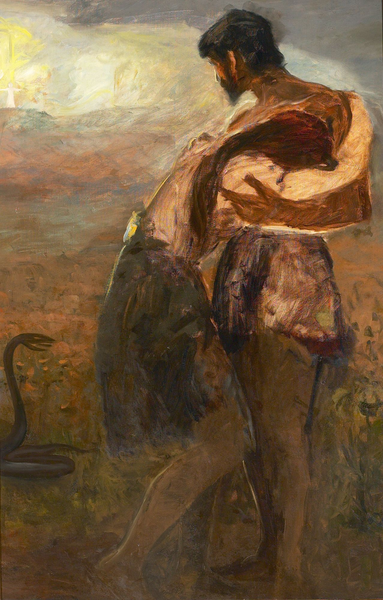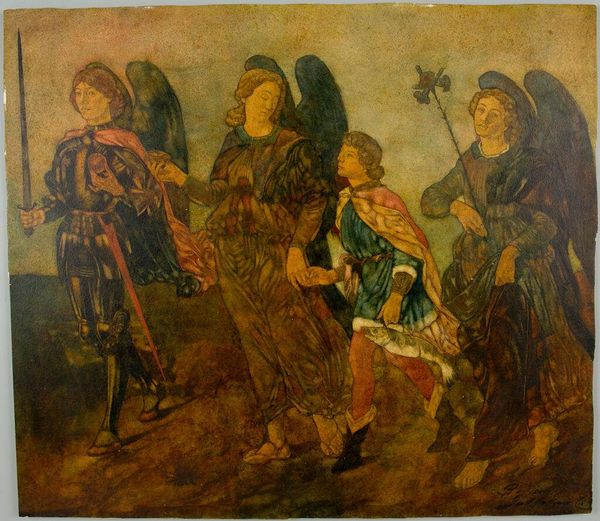
oil-paint
#
portrait
#
impressionism
#
oil-paint
#
oil painting
#
group-portraits
#
orientalism
#
genre-painting
Dimensions: 15.88 x 12.07 cm
Copyright: Public domain
Editor: So here we have William Merritt Chase's "Two Arabs," painted in 1881 using oil paint. It strikes me as an intimate glimpse into a culture, but the loose brushstrokes almost make it feel like a fleeting memory. What do you see in this piece? Curator: Beyond the immediate visual appeal, I see a complicated dialogue about representation. This painting falls squarely into the genre of Orientalism, popular at the time, which often exoticized and romanticized Middle Eastern and North African cultures. How does Chase, an American artist, engage with these tropes, and what power dynamics are at play? Editor: That's interesting. I was focused on the visual aspects—the light, the colors—but now I’m thinking about the artist's perspective. Do you think Chase is intentionally trying to exotify the figures? Curator: It’s hard to say definitively. The impressionistic style itself contributes to a sense of otherness, perhaps unintentionally reinforcing stereotypes. Consider the clothing, the setting – they present a vision of the ‘Orient’ that caters to Western fantasies. But what might be empowering about this work? Editor: I hadn't really thought about the power dynamics involved, but situating it within the history of Orientalism is crucial. It definitely casts a different light on the painting. The artist captures something, but the cultural depiction could carry other contextual implications of class and privilege? Curator: Precisely. Thinking critically about who is doing the representing, and what their motivations might be, is essential to deconstructing historical biases in art. How would you approach understanding the historical conditions to gain deeper context on its underlying politics? Editor: I learned the importance of considering an artist's motivations within historical and political context, beyond just the aesthetic qualities of a painting. Thanks. Curator: And I am grateful for the reminder to examine artworks from a fresh perspective, considering both intention and broader narratives that resonate throughout art history.
Comments
No comments
Be the first to comment and join the conversation on the ultimate creative platform.
